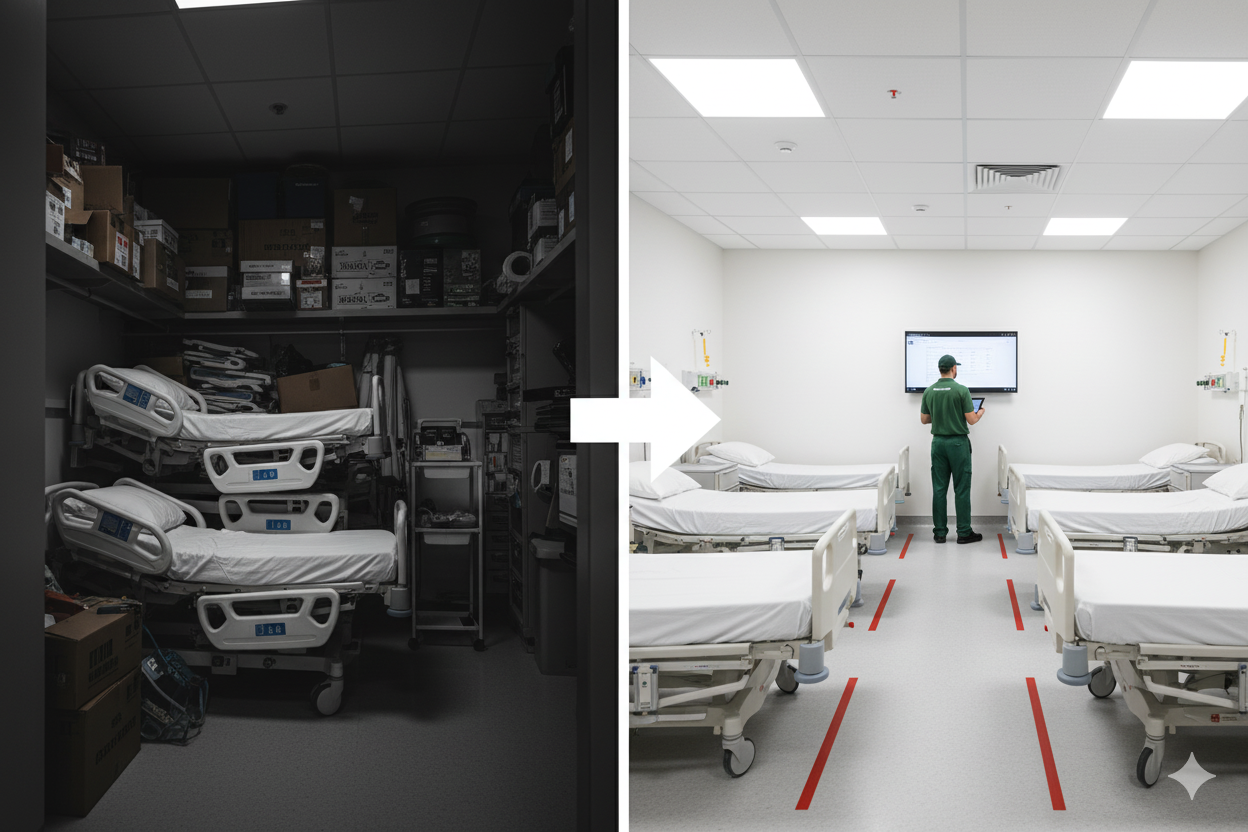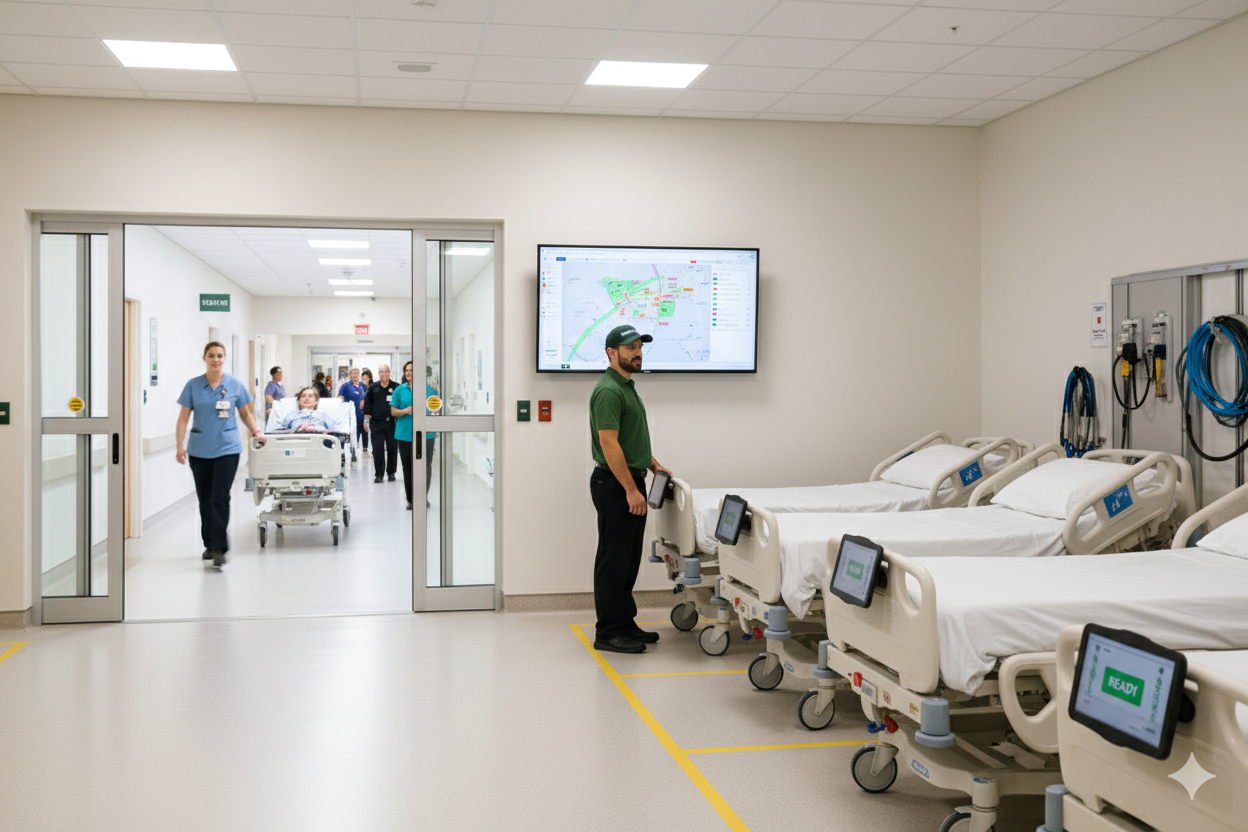
Hospitals are under pressure to improve bed availability, especially during peak periods. But contrary to popular belief, most facilities don’t need more beds—they need better visibility and smarter storage practices.
Beds are frequently misplaced, hoarded, or forgotten in underutilised corners of the hospital. From cluttered storage closets to maintenance limbo, these hidden assets sit idle while departments scramble to meet patient demand.
Emeritus helps hospitals solve this often-overlooked issue through inventory and storage optimisation. By implementing structured workflows and real-time tracking systems, they transform disjointed storage practices into a seamless part of patient flow management.
Here’s how Emeritus supports this transformation:
- Inventory Clarity – With proper tagging and PAR level reporting, staff know exactly how many beds are in circulation and where they’re located.
- Maintenance Visibility – Beds pulled from use for repair or cleaning are tracked and returned to service faster.
- Space Utilisation – Emeritus helps design smart storage areas that allow for safe, fast retrieval without compromising infection control.
This is about more than just organisation—it’s about unlocking capacity that’s already paid for. Delays in bed availability have a domino effect on admissions, ER backups, and surgical throughput.
The lack of real-time insight can also lead to unnecessary bed purchases, bloated budgets, and frustrated staff. But with a structured storage and tracking system, hospitals can avoid all of that.
Smart storage is a strategic win. It ensures that hospital beds are clean, compliant, and—most importantly—ready to roll.
Emeritus gives hospitals the tools to close the gap between storage and service. The beds are there. It’s time to put them to work.











